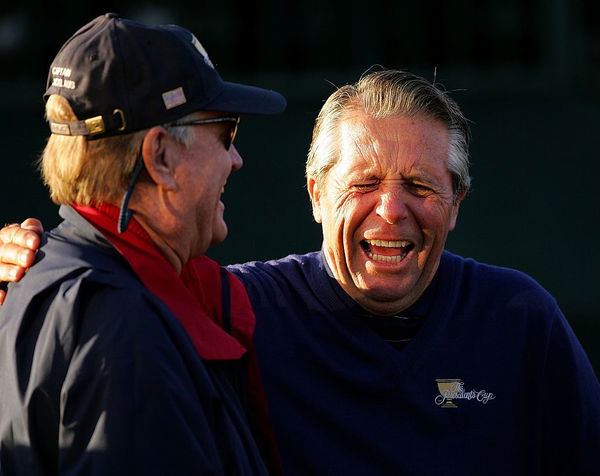Dave Pelz on NASA background, inventing "short game", and changing wedges forever
When Dave Pelz started in golf, the most lofted wedge was a 55 degree.


GolfMagic caught up with legendary golf coach and short game master Dave Pelz at the 2017 PGA Show in Orlando.
Since 2014, Pelz has been a Srixon/Cleveland staffer.
I’m a data guy. I majored in Physics, worked doing space research for 15 years at NASA, before going into golf, but not as a wedge guy.
But I’m a golfer first – I was on a golf scholarship at college and wanted to be a Tour player. While working on space research I developed some putters I thought were really neat, and a driver with no hosel 10 years before Callaway did that with their Big Bertha.
DAVE PELZ INTERVIEW: PUTTING IS NOT THE MOST IMPORTANT PART OF GOLF
Then I started really researching golf, making drivers, irons, everything. I started taking shot data from the Tour, like they do now. Pelz data was taken when there were no laser range finders. I had to walk the course and get yardages to everywhere. Boy, that took a long time.
I found 60-65% of all shots were wedges or putts. Importantly, 80% of the shots lost to par are putts or wedge shots. 80% of improvement could therefore come from inside 100 yards.

At the time no one was concentrating hard on this area – the phrase “short game” wasn’t even a thing. I started calling it “the short game”.
If you asked the Tour players where they were losing their shots, they’d come up with something like “I’ve got a hook with my irons” - but they were wrong.
I took data from Tom Kite and found out his accuracy with long irons was 7%. He was landing 14 feet and closer to the hole 7 times out of 100.
People thought his wedge game must have been good because he doesn’t hit it very far, and it was, but it was only 21%. The average on Tour was 26% - with a wedge!
The reason was because manufacturers were making players manipulate their clubs for certain distances, which is hard to do. I got into golf in 1975, when the most lofted wedge out there was 55-degrees, so I started inventing more lofted products. PING came back with a reply, because I hadn’t patented anything. I even went to 60 – everyone told me I was crazy, including Tour players, but now everyone plays them.
Your distance should be decided by what club you select from the bag. How were you meant to play a 50-yard shot when no one made a club over 55-degrees? It was forcing players like Kite to feel their shots, and he was decelerating through impact.

I’ve always competed with my students, and with the new lofted wedges I could beat them. They knew I wasn’t a better player, I didn’t have a better wedge game, I just had better equipment. So they all left with my 60-degree wedge – Tom Kite was the first player to use one in competition.
At first they resisted like crazy because they had to take another club out the bag. I had the hardest time convincing them – I used to bet them a fair amount of money to prove my point. Well, a lot of money to me, but not so much to a Tour player!
I’d say “instead of hitting your two-iron, hit your six iron and lay up”. I had the data – a third of the time they would miss-hit their two iron and get in trouble. The worst shots on tour were hit with the two-iron in those days…but not anymore because no one carries them! I said “hit the six iron, then use your wedge – it’s a better scoring average”.
In 1990-1995 I went to 64 degrees – it was the only way I could still beat my students with the greens getting faster. I had to play it high and land it soft.
Players asked me “what now, I have to get rid of my three iron”? I told them to keep the three, maybe take out a wood. Tom Seickmann was the first player to use the 64 degree.
It’s not just a case of stacking up the wedges, however, you need to be able to hit them well!
Head to Pelz Corner for short game tips.











